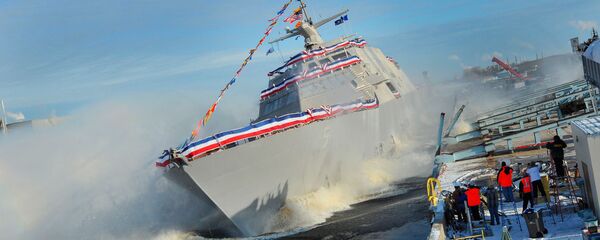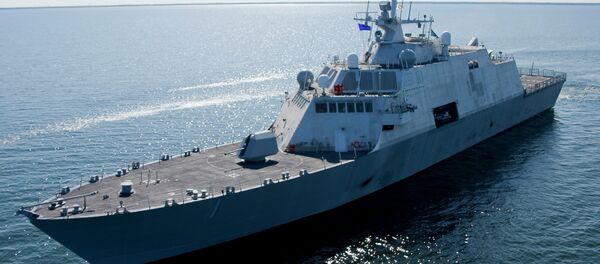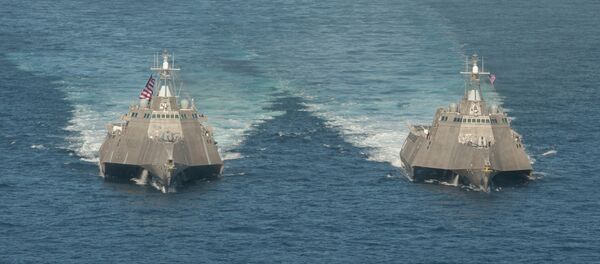US-based Lockheed Martin and Australia-based Austal suggested distinctly different designs and options for arming the Navy’s vessels. Austal offered an LCS frigate featuring the Mark 41 Vertical Launch System (VLS), which previous analyses deemed too expensive and unwieldy, along with the standard multi-purpose missile launchers typically found on destroyers and cruisers.
Conversely, Lockheed told Breaking Defense that it has the capability to integrate the VLS onto its own vessel but hasn’t because the service hasn’t expressed a desire for them to do so.
The Navy has not yet hammered out all the details in its official requirements, but the service will have to decide whether the VLS is worth the weight, price tag and effort to remove something else off the vessel.
Both the Lockheed and the Austal designs feature two 30mm autocannons and a 57mm bow gun.
The LCS’ lack of combat power has long been a point of contention for some critics, and all littoral ships are now receiving the Hellfire missile, a weapon originally designed for anti-tank operations that can only travel five miles.
The service is also considering Over The Horizon anti-ship missiles, which boast a range of over a hundred miles.
The LCS doesn’t pack as much heat as smaller vessels in foreign countries because great firepower wasn’t a priority when the ships were first designed, and the vessels are designed to carry unmanned watercraft, helicopters and drones, instead of serving as a kind of well-armed missile boat.
With its spacious hull the LCS can clear mines, best attack vessels and hunt submarines. Shifting defense priorities have caused Beijing and Moscow to outpace Washington with their ships’ firepower, prompting the US to sacrifice some of the mission space to make room for bigger guns.
The US Navy now envisions its own version of a frigate with no minesweeping capacity but which will feature sensors for anti-submarine and anti-ship operations and built-in weapons.
Trading in the bulky VLS for the more svelte Over The Horizon system would eliminate the Navy’s ability to haul its standard long-range weapons, making it difficult to protect ships that are being attacked.
When then-Naval Operations Chief Adm. Jonathan Greenert first presented his proposal for a weapons upgrade in 2014, he said “They did evaluate a Vertical Launch System,” but it was "kind of heavy, kind of big, a major change [adding] cost, time," according to Breaking Defense.





